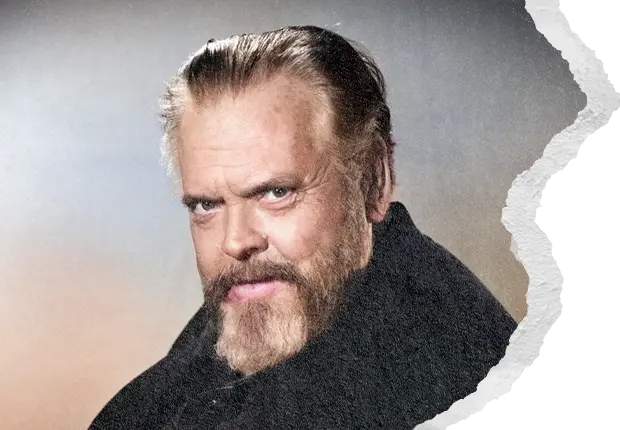The Stories We Tell
We are all aware of what type of stories modern Hollywood has been telling, but many don’t know about how these stories are crafted on a technical level and how much has changed since the inception of the motion picture. Many Directors today tend to craft their stories with lazy blocking and staging and extremely fast cutting. Was this due to cultural change or technological advancements? The answer, actually, is both. Let’s dive in.
Classical Hollywood cinema is a term used to describe both the narrative and visual style of filmmaking in American cinema from 1910-1960s. During this time it became the most influential style worldwide. Focusing on the visual side, the camera movement was subtle or sometimes non-existent. Actors moved within the frame in creative ways suggesting mood and character dynamics. Sydney Lumet’s 12 Angry men(1957) and Orson Wells’ Citizen Kane are two great examples of blocking and staging. When Orson Wells was asked to name the directors who most appealed to him, he replied, “I like the old masters, by which I mean John Ford, John Ford and John Ford.”
Director John Ford (1894-1973) had perhaps the most influence on other directors throughout his career and, surprisingly, he rarely moved his camera at all. Ford worked on more than 60 silent films from 1917 to 1928. Much of the silent era took its influence from Vaudeville plays. The camera would be placed in front of the subject and the actors would move around the frame as if you were watching a live play. During the screening, pianists and orchestras would play live music and sometimes improvise.
With the inception of sound in 1927, John ford said this, “I fear the art of telling stories by motion picture is becoming lost: it is too simple to take the easier way of telling the story through dialogue, and thus lose the most vital part of the motion picture, the motion.” Telling stories without dialogue is the most purified form of cinema and the masters of early cinema knew this. Take a look at John ford’s The Searchers(1956). John Wayne’s Character, Ethan Edwards, returns to find his homestead in flames from a Comanche attack. Aaron, his wife Martha, and their son Ben are dead. Ford never shows the audience the bodies. Only the reaction of the characters. This is the “show, don’t tell” film philosophy, not nearly as prominent today. Information is relayed to the audience through expositional dialogue. All of John Ford’s characters spoke through their actions rather than words. Hitchcock said “If it’s a good movie, the sound could go off and the audience would still have a perfectly clear idea of what was going on.”
The next time you sit down to watch a modern film, be aware of information that could have simply been shown. Unmotivated camera movement plagues almost all modern film. In classical cinema, the camera would follow the actor as he stood up or sat down. Frank Capra, the director of, ‘It’s A Wonderful Life’ once said, “The audience must never become aware that there is a camera within a thousand miles of a scene.” Modern Hollywood seems to make sure that you are aware that you are watching a movie. I’ll use Marvel as an example. You’ll have two characters in a room sitting down, no blocking or staging. The camera will pan to the left or right without purpose while spoon-feeding us information. You’ll also notice one camera behind person A’s shoulders, the other behind person B. In the editing room they cut between these two shots. It’s uncreative and simply lazy. Director Akira Kurosawa (Seven Samurai, Yojimbo, Rashomon) had a tendency to “cut on motion”, which was to edit a sequence of a character or characters in motion so that the action is smoothly depicted in two separate shots, rather than an interrupted one. You’ll see this same technique in William Wyler’s Mrs Miniver and Ben-Hur. David Lean (Dr Zhivago, Lawrence of Arabia) would use audio transitions between cuts matching the sounds of a man dropping a thermometer in a beaker in the first shot to a train beginning to move in the next. This smoothes the cut. These techniques were highlighted with complexity in movement and composition.
The development and ease of digital cinema, starting in 2002, has allowed directors today the ability to shoot as much footage as possible, while keeping costs low. During the classical era, film rolls were costly and every take was a worry for producers. This made the preparation of each shot much more important. The weight and size of the cameras has changed, allowing filmmakers like Joseph Kosinski to mount cameras inside of the cockpit of an F-14 Tomcat for 2022s Top Gun Maverick. The ease of creation in modern cinema has allowed companies such as Netflix to produce 371 movies and tv shows in 2018 alone. Add that to all of the other streaming services and you have thousands to choose from. Now you have 500 different directors not hired for skill or talent but to fill a role.
The cultural upheaval and change in the film world deserves its own essay, but I’ll briefly describe three of the biggest changes. The system now operates with 1. Nepotism and diversity hires. 2. The extinction of an all-male film crew and camaraderie. 3. The obviously forced cultural propaganda written into every frame. All three have severely affected the quality of entertainment and kept modern cinema stagnant for the past decade. Only a few movies squeak through the cracks that are worth watching. These films all seem to slow things down with their edits. With our attention spans disappearing, editors are forced to “trim the fat” so that 15 year old Sally with her brand new iPhone can pretend to pay attention while she endlessly scrolls Tik-tok.
This also affects the music as composers can no longer write fleshed out melodies and motifs. Look at the early work of Hans Zimmer (Gladiator, Prince of Egypt, The Last Samurai) compared to his later work on Inception and Dune. Now we have repetitive synths. Cuts have become much more frequent. Classical cinema saw long takes and used cuts to emphasize a moment. Today some shots are only shown for a fraction of a second, especially during action sequences. Movies like John Wick, The Kingsmen and Mad Max: Fury Road all use longer shots, with the action depicted in the center of the frame. When you watch your next modern movie take note of how long each shot is shown. We also see directors like Alfonso Curon and Alejandro Inarritu taking things to the extreme and not cutting at all for minutes, as in the car sequence in Children of Men(2006) or the nine-minute scene in Gravity(2013). The entire movie Birdman 2014 was shot in one single take. The most recent example being Sam Mendez 1917 with a few hidden cuts. This also feels unnatural because we cut our own lives every day when we blink. I think there is a balance between a long shot and using cuts to your advantage, but the ultimate goal should be to transport the audience into your world (escapism).
There are only a few filmmakers today who practice the classical style: David Fincher, Paul Thomas Anderson, the Coen Brothers, Francis Ford Coppola and Steven Spielberg. Spielberg is rightly criticized for his sentimental films that give the audience all the answers wrapped in a nice bow, but on a technical level his films are the closest you are going to get to classical cinema. His takes are long, his camera movement is motivated, he utilizes complex blocking and staging. He builds tension like Hitchcock and uses deep space like Orson Wells. Unfortunately he has been making “old-man movies” lately, as Tarantino puts it, but you cannot deny how fun Indiana Jones is or the magical quality of E.T.
One of David Fincher’s favorite movies is Jaws and you can see Spielberg’s influence in his own work (Seven, Fight Club and Gone Girl.) You must look at Spielberg’s influence to understand the greats of modern cinema. Spielberg’s favorite filmmakers are John Ford, Kurosawa, Frank Capra and David lean. It’s worrying, but expected, to see many young filmmakers list their favorite directors and find that all of them come from the 90s-today. Is there room for the classical style today? Yes. Robert Eggers (The Witch, The lighthouse, The Northman) doesn’t employ complex blocking and staging but he allows scenes to breathe with minimal cuts and long shots. He uses very little coverage, sometimes one camera shooting at a time.
Is the classical style the right or only way to make movies? No, but I think it’s a style that would complement a modern visionary very well. We just need more men making films. Men like John Milius and Mel Gibson. You don’t have to be blatant with your ideology. You just have to convey values of heroism, strength, family, etc. Gladiator’s first screen tests scored just as high with women as they did with men. This was because you had a masculine character driven by the loss of his family. Men want to emulate him and women want to be with him. We just don’t see these types of characters today. As BAP and others have mentioned, cinema is a tremendous way to influence culture. “No saint, no pope, no general, no sultan, has ever had the power that a filmmaker has; the power to talk to hundreds of millions of people for two hours in the dark”, said Frank Capra. So let’s get talking.
































